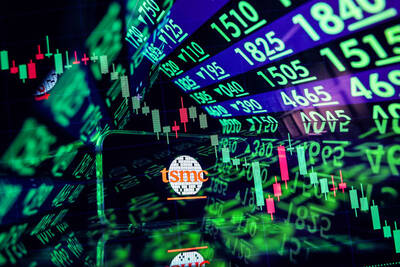Tesla Motors Inc is set to unveil the Model 3, its long-anticipated pitch to middle-class drivers and a key component in founder Elon Musk’s vision to mainstream the electric car. Tesla, until now a purveyor of luxurious all-electric cars with equally luxurious price-tags, plans to sell the Model 3 for us$35,000, half the base price of the flagship Model S.
The Model 3 is scheduled to be unveiled at Tesla’s Design Studio in Hawthorne, California, on Thursday.
Now only putting out 50,000 cars a year, Tesla plans to use the Model 3 to turn itself into a mainstream automaker selling 500,000 electrics annually by 2020.
Analysts said the new car is critical to Tesla at a time when cheap gasoline is challenging all “green” cars, and as rival General Motors Co stakes its claim on the electric vehicle middle market with its new Chevrolet Bolt.
“The Model 3 is really the measure if Tesla is going to make it long-term as a car company,” said Jessica Caldwell, an analyst at the auto industry Web site Edmunds.com. “If they want to bring the EV to the mass market they need the Model 3 to be successful.”
The Model 3 would be about 20 percent shorter than the S, placing it in the same segment as the Audi A4. It would also have four-wheel drive, according to people close to the matter.
The car is expected to be able to travel up to 500km without being recharged, depending on the battery system chosen, and would include modern safety systems, such as autopilot.
The first Model 3s are to be delivered by the end of next year in the US, and 2018 in Europe. Consumers can pre-order the vehicles starting on Thursday for a deposit of US$1,000.
Tesla faces direct competition from the soon to be released 200km range Chevrolet Bolt, which would have a one-year head start on the Model 3 in getting the attention of consumers looking for a moderately priced electric-vehicle.
“There is a cachet and a brand image at Tesla,” Chevrolet electrification division product marketing manager Darin Gesse said, adding “we also know Chevrolet has a brand image. We have shown that our customers have been the most happy in the country. Our battery is solid. We have confidence.”
Cheap gasoline is also a challenge, as more consumers opt for SUVs and other large vehicles.
Last month, only about three percent of the 1.3 million cars sold in the US were “green” cars, according to data from hybridcars.com.
“Gas prices are still down,” Caldwell said. “I think you will get the Tesla fans, but you may not have a massive mainstream market.”

Taiwan Semiconductor Manufacturing Co (TSMC, 台積電) last week recorded an increase in the number of shareholders to the highest in almost eight months, despite its share price falling 3.38 percent from the previous week, Taiwan Stock Exchange data released on Saturday showed. As of Friday, TSMC had 1.88 million shareholders, the most since the week of April 25 and an increase of 31,870 from the previous week, the data showed. The number of shareholders jumped despite a drop of NT$50 (US$1.59), or 3.38 percent, in TSMC’s share price from a week earlier to NT$1,430, as investors took profits from their earlier gains

In a high-security Shenzhen laboratory, Chinese scientists have built what Washington has spent years trying to prevent: a prototype of a machine capable of producing the cutting-edge semiconductor chips that power artificial intelligence (AI), smartphones and weapons central to Western military dominance, Reuters has learned. Completed early this year and undergoing testing, the prototype fills nearly an entire factory floor. It was built by a team of former engineers from Dutch semiconductor giant ASML who reverse-engineered the company’s extreme ultraviolet lithography (EUV) machines, according to two people with knowledge of the project. EUV machines sit at the heart of a technological Cold

TAIWAN VALUE CHAIN: Foxtron is to fully own Luxgen following the transaction and it plans to launch a new electric model, the Foxtron Bria, in Taiwan next year Yulon Motor Co (裕隆汽車) yesterday said that its board of directors approved the disposal of its electric vehicle (EV) unit, Luxgen Motor Co (納智捷汽車), to Foxtron Vehicle Technologies Co (鴻華先進) for NT$787.6 million (US$24.98 million). Foxtron, a half-half joint venture between Yulon affiliate Hua-Chuang Automobile Information Technical Center Co (華創車電) and Hon Hai Precision Industry Co (鴻海精密), expects to wrap up the deal in the first quarter of next year. Foxtron would fully own Luxgen following the transaction, including five car distributing companies, outlets and all employees. The deal is subject to the approval of the Fair Trade Commission, Foxtron said. “Foxtron will be

INFLATION CONSIDERATION: The BOJ governor said that it would ‘keep making appropriate decisions’ and would adjust depending on the economy and prices The Bank of Japan (BOJ) yesterday raised its benchmark interest rate to the highest in 30 years and said more increases are in the pipeline if conditions allow, in a sign of growing conviction that it can attain the stable inflation target it has pursued for more than a decade. Bank of Japan Governor Kazuo Ueda’s policy board increased the rate by 0.2 percentage points to 0.75 percent, in a unanimous decision, the bank said in a statement. The central bank cited the rising likelihood of its economic outlook being realized. The rate change was expected by all 50 economists surveyed by Bloomberg. The